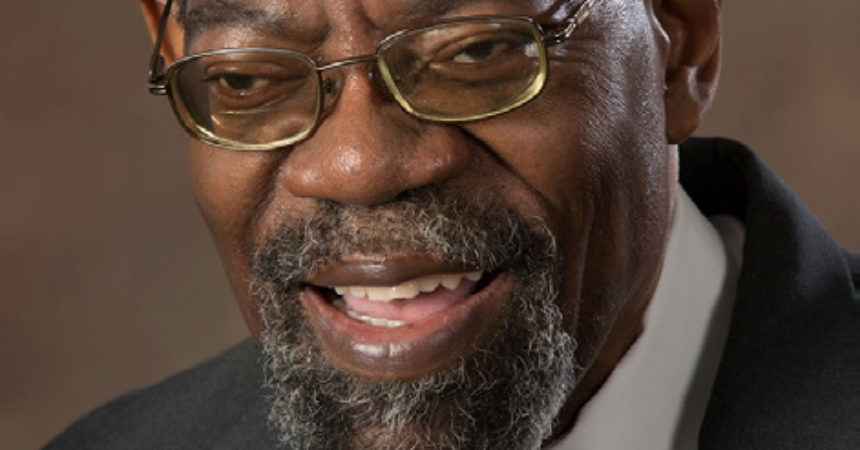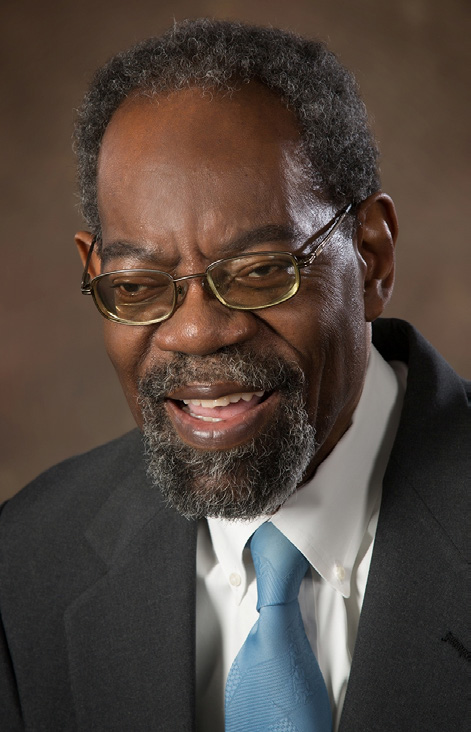
Holifield set path for diversity at Harvard law school
Black Law Student Association celebrates 50th anniversary

Bishop Holifield, co-founder of Havard’s Black Law
Students Association, will speak at the association’s 50th anniversary celebration. Photo by Dina Ivory
Photography
By St. Clair Murraine
Outlook staff writer
Almost 20 years after he led a successful court fight for a law school to return to FAMU, retired attorney Bishop Holifield’s voice still rings with frustration at what he considered an inequity.
“FAMU’s law school should have never been taken away,” Holifield said, his tone steady and strong with every word. “While the FAMU law school was opened it produced outstanding students who went on to achieve high levels of success.”
Holifield was seven years removed from Harvard Law School when he found himself handling one of the biggest cases early in his 26-year career as legal counsel for FAMU. The wrangling began when the legislature decided to stop funding a law school at FAMU in 1968, instead diverting the money to a law school at FSU.
Fifteen years passed before the suit was settled to restore the FAMU law school in 2000.
At the same time that Holifield was battling for the return of FAMU’s law school, he took on the NCAA in another major case. The collegiate sports governing body had turned down FAMU’s request to move from Division II to Division I-AA.
Then President Walter Smith called on Holifield to appeal the NCAA’s denial. He won.
“Our argument was that FAMU had success in every major sport that we were participating in,” Holifield said. “As I recall, (football coach) Rudy Hubbard had gone undefeated the year before. Our basketball team was doing very well and our attendance was significant. We had the attendance, we had the facility and outstanding records.
“We compared favorably with all the other schools in I-AA so we saw no reason why we shouldn’t be included in that number.”
Holifield said he was vindicated when FAMU’s football team won the first NCAA Division I-AA football championship in 1978, its first season after it was promoted to a higher division.
“The entire FAMU community celebrated that,” he said. “We liked to say those were the glory days.”
Fighting such battles wasn’t new to Holifield, a Tallahassee native who began taking college courses at FAMU when he was a junior at FAMU development and research school. Holifield went on to become a trailblazer at Harvard, where he and Reginald Gilliam established a Black Law Students Association.
Holifield will return to Harvard next week to celebrate the association’s 50th anniversary. A lengthy list of events is planned from April 6 to 7, including panel discussion by former members of the association who have gone on to distinguished careers.
Holifield will be one of the main speakers during kickoff ceremonies and his audience could expect to hear plenty about the association’s early struggles, some that resulted in Harvard moving to make its tenured faculty more diverse with the inclusion of Blacks.
Fifty years later, Holifield said the association is even stronger and he’s glad to be able to celebrate its longevity.
“I’m very proud and I’m also proud of the current group of Black law students that we have,” he said. “They have remained relevant.”
During the years that followed his graduation from Harvard in 1969, his sister Marilyn Holifield and his niece, Kia Holifield, have also graduated from Harvard Law School.
Holifield pushed for inclusion of the association in the search for the first Black professor at Harvard. Robert Bell recalled when Holifield allowed him to travel in his stead to be part of the interviewed process when Derrick Bell, who has since become a renowned civil rights activist, was being interviewed for the job that made him the first Black tenured professor at Harvard.
“Bishop was always aware and concerned about the difference between us and the majority,” said Bell, Holifield’s former classmate and a retired Maryland chief judge of the court of appeals. “He was always one who spoke about the disparities and talked about bridging gaps.”
Holifield began to address disparities and inequities on Harvard’s campus and in the Cambridge, Mass., community soon after he started classes in 1966. He believed enough of his classmates felt as strongly about racial issues, prompting him and Gilliam to start the association.
“It has always been my position that when you’re dealing with issues of race in America, it takes an institution to respond to those challenges,” he said. “It just can’t be dealt with by an individual.”
It didn’t take long after its initiation for the association to begin its push for recruitment of Black students and even wanted more diversity among the crews who were doing construction work on the campus at the time.
No issue was too small for the association. Its members even asked for more diversity in the food that was being served in the cafeteria in a call for meals that Blacks are familiar with.
But they never lost sight that they were taking on a powerful institution, Holifield said. They had a strategy, though.
“We built our organization knowing we would have the wherewithal on how to address a powerful institution like Harvard Law School,” he said.
The students eventually found an ally in James Casner, a law school dean. He made his biggest impact for the organization following the assassination of Martin Luther King.
Casner allowed the students to use the Ames Courtroom on campus to stage a memorial for King. Casner went further.
When they asked for the law school to be closed for a half day in King’s honor, Casner got a two-day closure.“It was historic,” Holifield said. “The university did not close for that long when John Kennedy was killed.”
The students went another step when riots broke out throughout the city over King’s death. They joined with other Harvard Black Law Students at campuses around the state to monitor police treatment of Black protestors, Bell said.
A bit of irony surrounded Holifield’s choice of Harvard over completing his law studies at FAMU. He would have spent just two of the three years required for law school students at FAMU, which graduated its final class in 1968 after state funding was cut.
But Holifield’s mind was set on attending Harvard, following his undergrad studies at FAMU.
“I had spent four years at FAMU undergrad, which I really enjoyed but it was time for me to take on a new challenge,” he said. “Harvard was regarded as the best law school in the world and I wanted a change. I wanted a challenge and when I got to Harvard I got one.”







